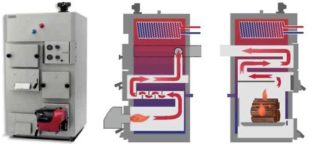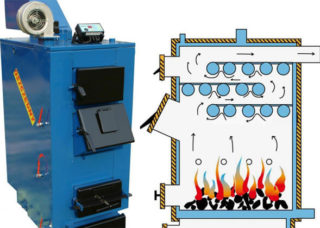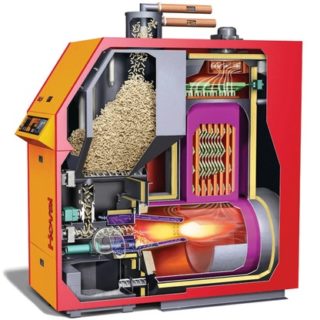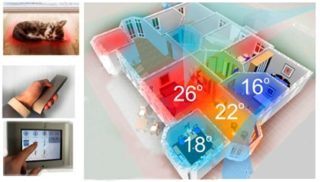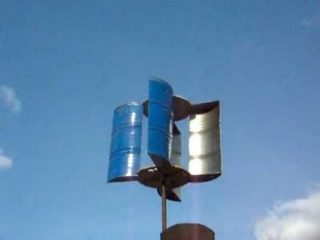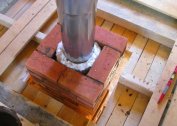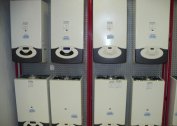The constant increase in the cost of utilities makes us think about revising our views on methods of maintaining heat in the winter, both in the country house and in a country house. The solution to this issue must be approached comprehensively. You need to understand that economy heating is not cheap appliances and available resources. A high-quality product can only be obtained with large investments. When choosing an economical electric boiler, gas, solid fuel or combined equipment, it is necessary to take into account their features, advantages and disadvantages.
Heat loss reduction
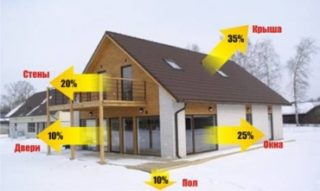
Qualitatively warming a house with electricity does not work economically if the building does not have additional protection from the cold. 35% of heat loss occurs through the roof, 25% through the wall and up to 15% through the floor. These are big numbers that cannot be ignored. There are a large number of insulation materials and methods for their use.
You can use one of the following technologies for decorating a house and an apartment outside:
- Wet facade. Insulation plates are glued to the wall, which are then nailed, reinforced, putty and painted. Foam, polystyrene foam or mineral wool is used.
- Ventilated facade. There is no direct contact with the supporting structures. At a distance of 3-5 cm from them, a vertical structure is constructed, consisting of a frame and basalt wool laid in it. On both sides, the insulation is covered with a membrane film, and the outside is sheathed with hard finishing material.
- Fur coat made of polyurethane foam. The liquid is sprayed into the volumetric frame; after it hardens, it is chipped with decorative plates or panels. Today polyurethane foam is considered the best insulation material for all operational characteristics.
- Backfill. Expanded clay of small and medium fractions is used to create a heat-insulating layer for the arrangement of floors and ceilings. The material is inexpensive, but requires periodic replacement due to shrinkage and absorption of moisture.
Even the most economical heating and insulation will not bring the desired effect, if you ignore the openings in the walls. It is necessary to install modern iron doors with internal filling and energy-saving double-glazed windows. They have a metal coating that traps the heat inside the room and prevents the cold from penetrating into it from the outside.
Choosing the cheapest fuel
In order to choose the most economical heating in a private house, it is recommended that you familiarize yourself with the available heating devices and the characteristics of the energy sources used. In this case, it is necessary to take into account factors such as the geographical location of the structure, its configuration and the prospect of rising fuel prices.
Electric boilers
The price of electricity is constantly growing, there is no tendency to decrease it.
However, economical electric boilers have these advantages:
- compactness;
- safety;
- reliability;
- durability;
- autonomy;
- the ability to configure work parameters;
- high performance;
- ease of installation;
- lack of need for permission to install.
Electric heating of a house is an economical way only if the house is located in a rural area where reduced tariffs are applied, or if its owner has privileges and subsidies.
Gas connection
Gas remains the most inexpensive source of energy, but also tends to constantly rise in price. It is recommended to connect to it if the gas pipe passes near the country house.
Such a decision is supported by such factors:
- wide range of equipment;
- high performance;
- noiselessness;
- safety provided by automation;
- the availability of offline mode.
It should be taken into account and cons. To install the boiler, it is necessary to obtain permission, only specialists can carry out installation. In addition, large initial investments are required.
Liquid fuel boiler equipment
Equipment of this type is rarely installed in the private sector. More often it can be seen at industrial facilities.
For heating the house, diesel fuel, fuel oil and oil working out are used if there is no alternative.
Devices have such advantages:
- good heat dissipation;
- ease of installation;
- versatility in raw materials for use.
There are difficulties in the operation of liquid-fuel furnaces. They consist of the need for constant refueling and ensuring the safe storage of fuel.
Wood or coal stove
The rise in price of electricity and gas has forced many property owners to turn their attention to traditional energy sources - firewood and coal. However, the increase in prices for raw materials, their production and transportation did not pass by these resources.
Advantages of equipment:
- affordable cost;
- reliability;
- simplicity of operation;
- the possibility of independent extraction of fuel;
- good heat dissipation.
In order to be able to warm the building with high quality throughout the cold period, you need to create a fairly large supply. It is also necessary to constantly throw coal and firewood into the boiler, including at night. And this is not the best pastime for the owners of the building.
Wood pellet boiler
The best solution to save on heating is to install a long-burning furnace. It is a device where air enters the combustion chamber from above. As a result, fuel in the furnace smolders rather than burns.
Advantages of the system:
- long burning, which in the best models lasts up to 2 days;
- high efficiency, reaching up to 92%;
- quick payback;
- compactness;
- multifunctionality;
- profitability.
Hydrolysis boilers running on pallets and briquettes have practically no drawbacks. They are difficult to make with their own hands and a careful selection of the installation location is required, since the case is very hot.
For heating a home, the most economical way is to use a universal stove working on all types of fuel, including waste, which can be collected in unlimited quantities at any landfill. A furnace is made from a steel pipe with walls at least 6 mm thick. The furnace is equipped with cast-iron grates that can withstand the combustion temperature of coal. The boiler is capable of burning plastic, firewood, fabric, and even liquid fuel, which impregnates rags or foam rubber.
Improving the efficiency of the heating system
Using cheap fuel, warming a building and installing an economical boiler are the first steps towards improving the heating efficiency of a building and lowering the costs of maintaining it.
You can use the following options for additional improvements to the heating system at home:
- Planning the location of the premises. Living rooms should be designed in the middle and on the sunny side, and auxiliary rooms near the walls. As a result, the heat will be concentrated in the right places.
- Installation of the programmer. This device measures, lowers and raises the temperature in accordance with the specified parameters.While the owners are absent, the building cools down and heats up when they arrive.
- Pipe wiring and installation of the underfloor heating system. The beam scheme is more expensive to install, but works more efficiently. Spiral construction is cheaper, but also warms worse. Underfloor heating allows evenly distributing heat evenly over the entire room area at low cost. Depending on the choice of the main heating system, water or electric floors are installed. The latter are divided into cable, matte and film.
- The combined use of heaters of various types. Electric heating is an economical way for small rooms, provided that convector-type heaters are used, which are used as auxiliary in severe frost. The main source is an economical pyrolysis furnace or gas boiler.
- The use of heat accumulators. They are a storage tank installed in the attic or in one of the auxiliary rooms. Heating of the coolant occurs from the chimney or directly from the boiler. Accumulating heat gradually, the battery transfers it to radiators. Energy storage allows you to maintain a uniform temperature level in the batteries. At the same time, fuel consumption is reduced by 20-25%. If the building is heated by an electric boiler, it makes sense to install a two-peak meter and heat the heat accumulator to the limit at night, when the current costs 2 times less.
When considering options for electric heating, you should think about how you can get energy for free or much cheaper than from utility suppliers.
Renewable heat sources
Renewable energy sources, which in themselves are worthless, have long been used on an industrial scale. This trend has gained particular scope in developed countries.
For heating a private house, you can use the following options:
- Windmill. With the right design, the blades rotate even in light winds. Rotation is transmitted to an engine that generates electricity. The stabilizer brings it to the desired parameters and delivers it to the house network. Excessive energy is stored in high capacity batteries. The disadvantage of this solution is the high cost and complete dependence on the weather.
- Solar panels. There are ready-made panels on sale. They only need to be installed, connected and configured. The rest will be made by the star. The batteries operate silently and produce up to 10 kW / h. The downside is that such devices should only be used in areas where clear weather prevails.
- Water turbines. You can use them if there is a river or a deep stream with a strong current near the house. This technology is complex, expensive, not yet perfected. Its advantages are that the equipment does not depend on the weather, time of day or external supplies.
- Geothermal heat boiler. It is a system of pipes buried in the ground in a vertical or horizontal orientation. The external circuit is connected to a thermal boiler, which produces heating of the medium and feeds it into the internal circuit. Installation of the system is a time-consuming and costly business, but productivity allows you to achieve payback in 10 years.
Devices for using the energy of nature can be manufactured and installed independently, but it is better to use the services of specialists with skills in this field.

